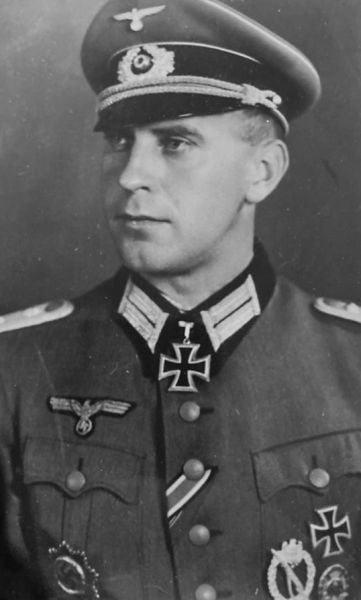Kiesling, Heinrich
- Date of birth:
- May 31st, 1909 (Gröppendorf/Saxony, Germany)
- Date of death:
- June 18th, 1944 (round Witebsk/Belarus, Soviet Union)
- Nationality:
- German
Biography
Heinrich Kiesling was killed on June 18th, 1944. At that moment he served as Kommandeur Grenadier-Regiment 529 with the rank of Oberst.
Promotions:
November 7th, 1943: Oberstleutnant;
?: Oberst.
Do you have more information about this person? Inform us!
- Period:
- Second World War (1939-1945)
- Awarded on:
- May 16th, 1940
- Period:
- Second World War (1939-1945)
- Awarded on:
- July 26th, 1940
- Period:
- Second World War (1939-1945)
- Awarded on:
- August 18th, 1942
- Period:
- Second World War (1939-1945)
- Rank:
- Major
- Unit:
- Kommandeur, III. Bataillon, Grenadier-Regiment 768, 377. Infanterie-Division, Heer
- Awarded on:
- June 10th, 1943
- Period:
- Second World War (1939-1945)
- Rank:
- Major
- Unit:
- Führer, Grenadier-Regiment 529, 299. Infanterie-Division, Heer
- Awarded on:
- November 7th, 1943
On the 27.09.1943 Major Kiesling and his Grenadier-Regiment 529 found their retreat route blocked by strong Soviet forces. For Kiesling there existed two possible courses of action. He could retreat through a boggy forest that was still clear of the hostile forces, but this would necessitate leaving behind all heavy weapons. Or he could directly break through the opposing lines. Kiesling elected for the latter option.
That evening, Kiesling and his men disengaged from the Soviets and began moving through the heavily forested terrain. At about 22:00 that night they encountered the opposing blocking line, and an hours-long battle commenced. The heavy Soviet resistance proved very difficult to overcome however, and the attacked threatened to stall. However at just the right moment a German assault unit managed to find a hidden path through the difficult terrain that led towards the northwest, one which would also permit the heavy weapons to be taken along.
The regiment thus broke contact with the Soviets and disappeared through the lines of the surprised opponent. After a long night march, on the morning of the 28.09.1943, Major Kiesling and his regiment stood ready for defense in the new German frontline with all their heavy weapons and vehicles.
For his exemplary bravery and leadership during this operation, which were both invaluable for its success, Kiesling would be decorated with the Oakleaves to his Knight’s Cross.
321st Award.
That evening, Kiesling and his men disengaged from the Soviets and began moving through the heavily forested terrain. At about 22:00 that night they encountered the opposing blocking line, and an hours-long battle commenced. The heavy Soviet resistance proved very difficult to overcome however, and the attacked threatened to stall. However at just the right moment a German assault unit managed to find a hidden path through the difficult terrain that led towards the northwest, one which would also permit the heavy weapons to be taken along.
The regiment thus broke contact with the Soviets and disappeared through the lines of the surprised opponent. After a long night march, on the morning of the 28.09.1943, Major Kiesling and his regiment stood ready for defense in the new German frontline with all their heavy weapons and vehicles.
For his exemplary bravery and leadership during this operation, which were both invaluable for its success, Kiesling would be decorated with the Oakleaves to his Knight’s Cross.
321st Award.
- Period:
- Second World War (1939-1945)
- Awarded on:
- February 13th, 1944
- Period:
- Second World War (1939-1945)









